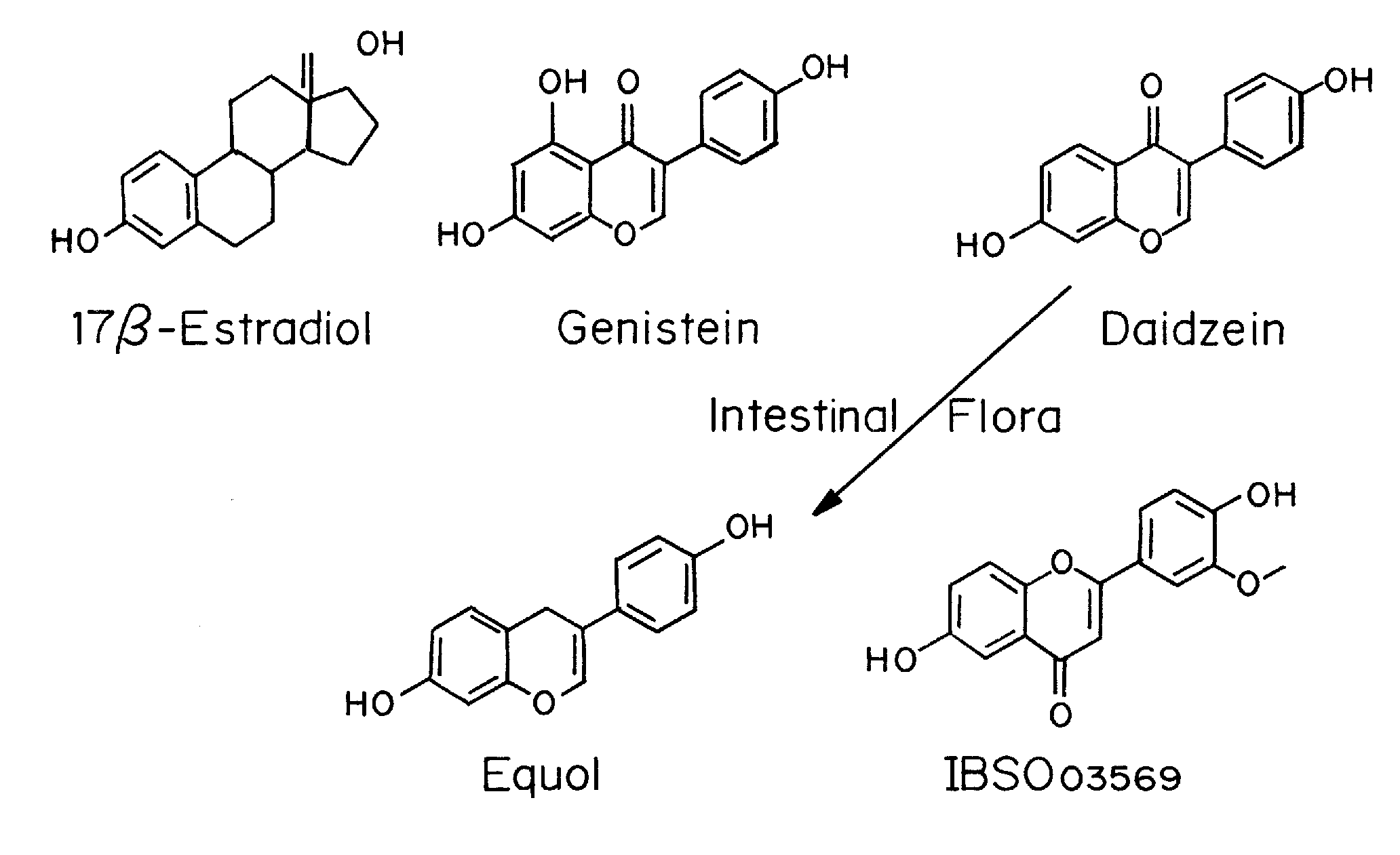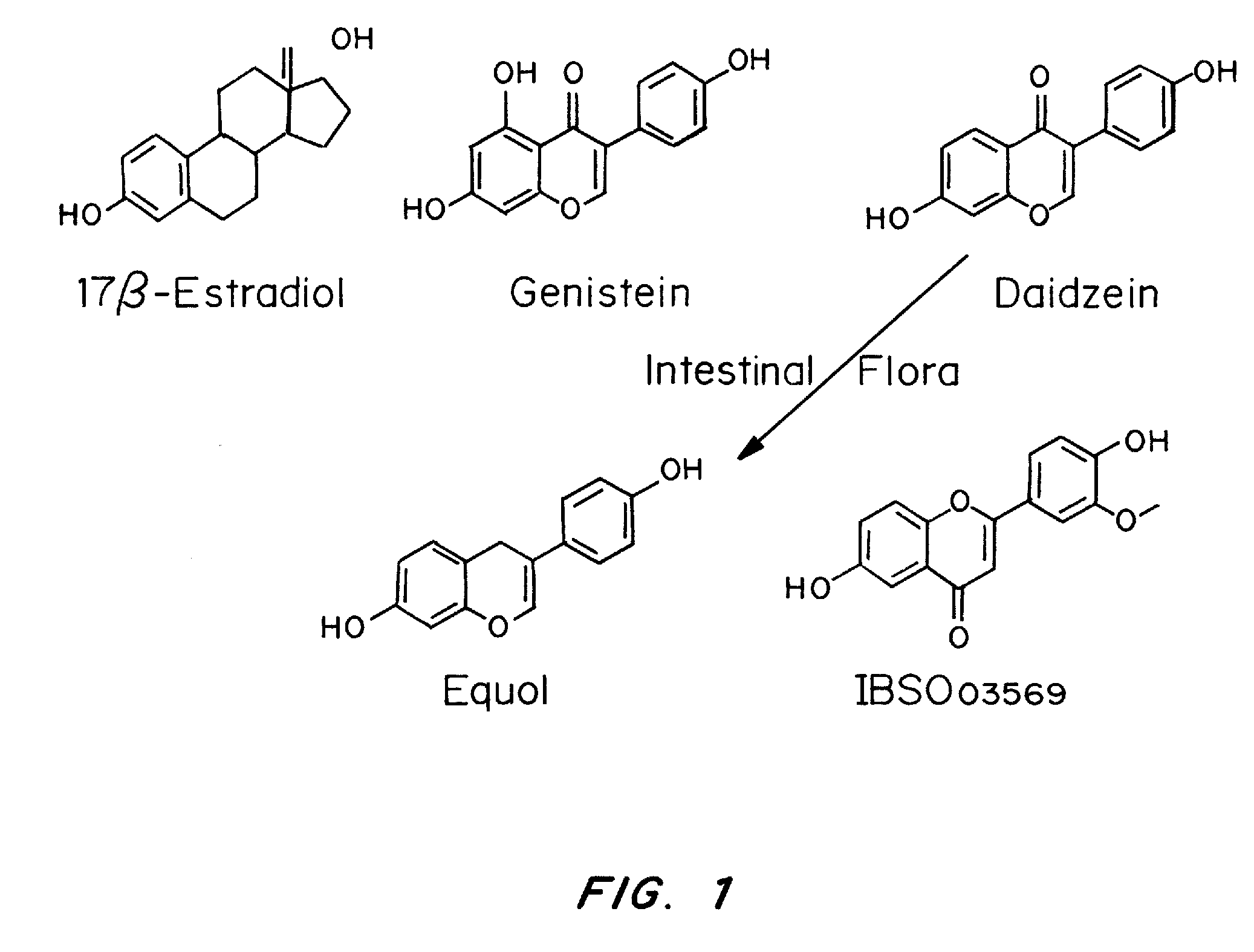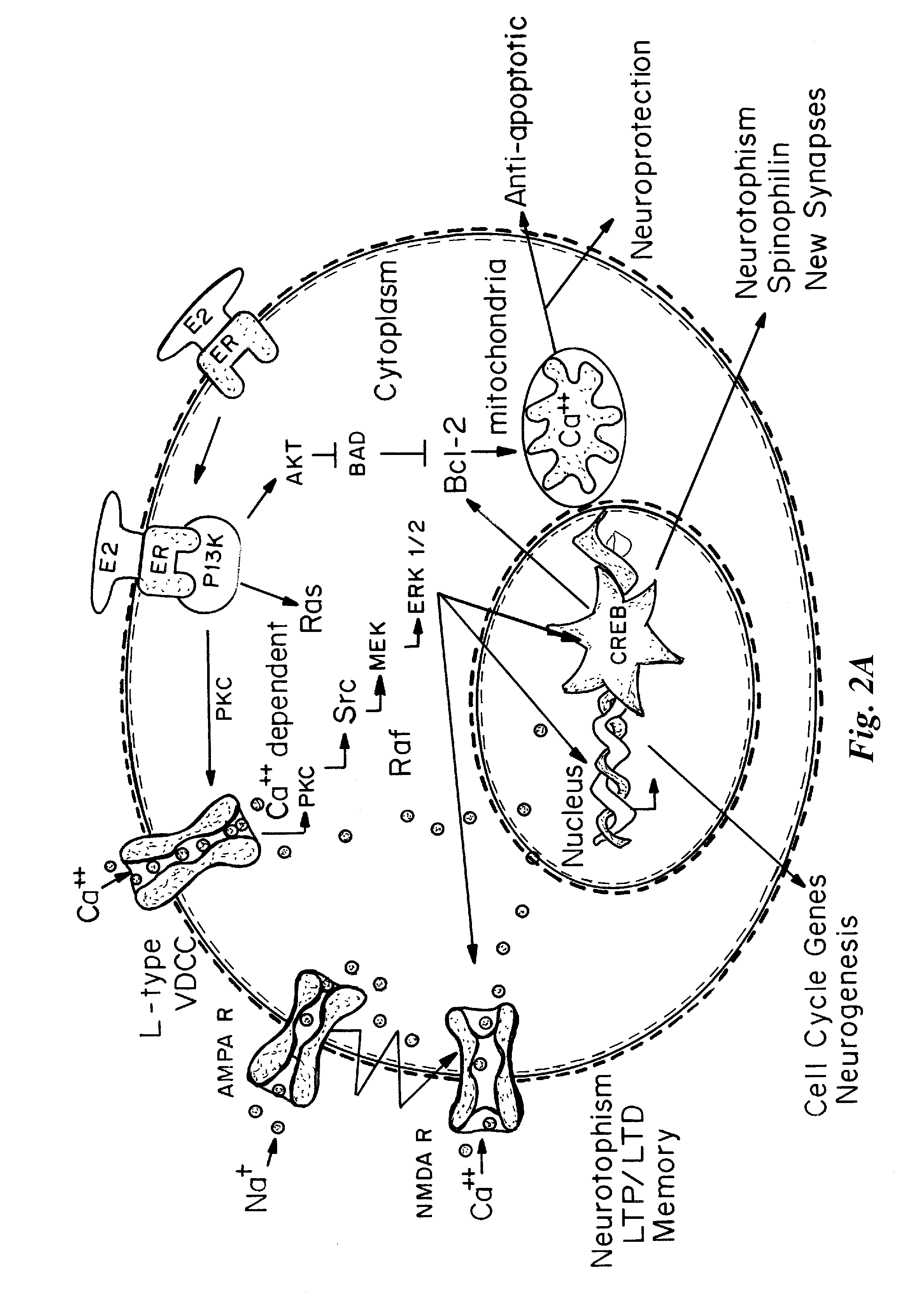Phytoestrogenic formulations for alleviation or prevention of menopausal symptoms
- Summary
- Abstract
- Description
- Claims
- Application Information
AI Technical Summary
Benefits of technology
Problems solved by technology
Method used
Image
Examples
example 1
Identification of PhytoSERMs
[0123]ERβ has been associated with estrogen-induced promotion of memory function and neuronal survival. Based on the optimized complex structure of human ERβ LBD bound with genistein, computer-aided structure-based virtual screening against a natural source chemical database was conducted to determine the occurrence of plant-based ERβ-selective ligands. Twelve representative hits derived from database screening were assessed for their binding profiles to both ERs, three of which displayed over 100-fold binding selectivity to ERβ over ERα.
[0124]Materials and Methods
[0125]Identification of Compounds in Database
[0126]The ligand binding domains of the human ERα and ERβ are approximately 60% homologous. Structural modeling and mutational analyses indicate that two variant amino acid residues along the ligand binding pocket, Leu 384 and Met 421 in ERα, which are replaced with Met 336 and Ile 373, respectively, in ERβ, are the key molecular constituents underlyi...
example 2
Preclinical Identification of ERβ-Selective PhytoSERM Combinations for Prevention of Neurodegeneration
[0136]The impact of ERb-selective PhytoSERMs when administered singly or in combination on neuronal survival and molecular / functional markers associated with prevention of neurodegeneration and Alzheimer's disease (AD) was investigated.
[0137]Materials and Methods
[0138]17β-Estradiol was purchased from Steraloids (Newport, R.I.). Genistein, daidzein and equol were purchased from Indofine Chemical (Hillsborough, N.J.). IBSO03569 was purchased from InterBioScreen (Moscow, Russia). The structures of these compounds are shown in FIG. 1.
[0139]In Vitro Treatments: Test compounds (or combinations) were first dissolved in analytically pure DMSO (10 mM) and diluted in Neurobasal medium to the working concentrations right before treatments.
[0140]In Vivo Treatments: Test compounds (or combinations) were first dissolved in analytically pure DMSO and diluted in corn oil (50 ml of DMSO in 950 ml of...
example 3
PhytoSERMs Prevented Estrogen Depletion by Ovariectomy (OVX)-Induced Rise in Tail Skin Temperature (TST) in a Mouse Hot Flash Model
[0191]Data shown in FIG. 9 demonstrate that estrogen depletion by OVX induced a significant rise in the tail skin temperature (TST) in mice treated with the control diet (FIG. 9A), which was prevented by the phytoSERMs-containing diet but not the soy extract diet (FIG. 9B). These data suggest the therapeutic potential of the phytoSERMs for preventing / treating menopausal hot flashes and possibly other symptoms.
[0192]2. PhytoSERMs Promoted Spatial Working Memory Function, Neurotrophic / Synaptic Protein Expression and β-Amyloid Clearance Mechanism Against AD Pathogenesis in Female Mice
[0193]Data shown in FIG. 10 demonstrate that in a Y-maze two-trial recognition test of spatial working memory function, OVX mice treated with the phytoSERMs-containing diet performed significantly better than OVX mice treated with the control diet (FIG. 10A). Consistently, West...
PUM
| Property | Measurement | Unit |
|---|---|---|
| Frequency | aaaaa | aaaaa |
| Frequency | aaaaa | aaaaa |
| Frequency | aaaaa | aaaaa |
Abstract
Description
Claims
Application Information
 Login to View More
Login to View More - R&D
- Intellectual Property
- Life Sciences
- Materials
- Tech Scout
- Unparalleled Data Quality
- Higher Quality Content
- 60% Fewer Hallucinations
Browse by: Latest US Patents, China's latest patents, Technical Efficacy Thesaurus, Application Domain, Technology Topic, Popular Technical Reports.
© 2025 PatSnap. All rights reserved.Legal|Privacy policy|Modern Slavery Act Transparency Statement|Sitemap|About US| Contact US: help@patsnap.com



